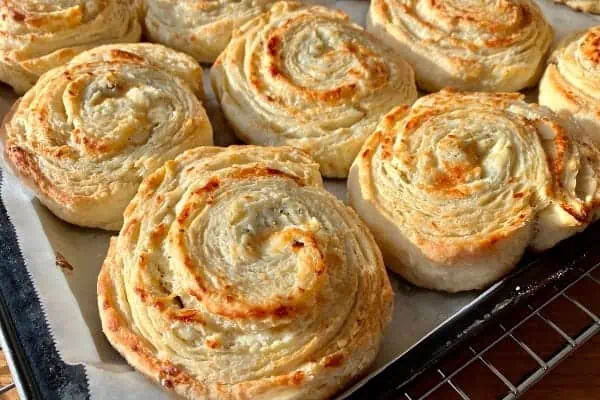Last holiday season I cajoled members of my family into forming teams and entering a contest, invented by me, entitled, “The First Annual Shake-off, Stiroff Cocktail Competition,” to be held on Christmas day just prior to dinner. My 85-year-old mother agreed to be the judge.
There were many things wrong with this idea. First of all, though some of us were together in Toronto, the rest were in locations as far-flung as Hong Kong, Parksville, B.C., and Collingwood, Ontario; second, why load more activity onto a day already fraught with long-held traditions, complicated logistics, and delicate emotional states? Third, nobody in the family had ever shown any interest in any cocktail other than a dry vodka martini, and finally, is an 85- year-old with a heart condition really the best choice of judge for such a contest?
But the family was indulgent, and my mother was game. Two of the longdistance contenders bailed, citing busy-ness as an excuse, however, the Parksville contingent joined in with enthusiasm. They proffered an original creation, incorporating a botanical essence known to, but eschewed by, the larger family, and a dubious, fruity liqueur. The text that accompanied their recipe was purple in the extreme (sic): “We have based our contest entry on the exquisite combination of Green Chartreuse and Luxardo Maraschino. Inspired by cocktails like The Last Word and the Champs Elysees, we have used St. Remy Brandy as our base and a bright blend of lemon and orange for the top notes….The bold complexity of the Chartreuse and its 130 botanicals provides a solid anchor to this drink and invites our deeper contemplation. This is a compact cocktail for the thoughtful drinker. And so, with a solemn nod to the monks of France, may we present…The Carthusian Cloak.”
The gauntlet had landed, with a thud. At 6 pm EST on Christmas Day, at competition headquarters in Toronto, the judge presided in an over-sized armchair as, team-by-team, the competitors brought forward their entries. My sister-in-law and I, unfazed by the competition from the west, offered a bright, whisky-based cocktail we had named after the judge as a tribute to her doughty spirit. The judge’s response was hard to read. My brother and his daughter’s boyfriend put forward a respectable Manhattan, with Basil Hayden Kentucky Bourbon as the base liquor. The judge remained inscrutable. My niece and my husband entered the ring with hot buttered rum, a drink they posited as a dessert cocktail, combining as it did amber rum, icing sugar, brown sugar, nutmeg, and butter with vanilla ice cream.
The judge’s face lit up. “That’s the one!” she cried, and downed the lot. The room exploded. Accusations flew thick and fast. My team was reviled for currying favour by naming our drink after the judge; the winner’s father accused her of playing to the judge’s sweet tooth, to which she replied, “We all knew who the judge was, going in!”
But the contestants whose ire was greatest were the Parksvillians. They blistered the phone lines with their outrage. How could the judge choose fairly if she had not tested their entry? Had not the contest organizer promised to procure all the ingredients necessary for the long-distance entries? What had happened to fairness, decency, and good faith? A rematch was demanded. But alas, the appetite for cocktails had abated at chez Genest and the rematch never occurred.
I confess, the outrage was justified. It was my fault. Though I did a perfunctory search for Luxardo Maraschino in liquor outlets, my heart wasn’t in it. I don’t like Kirsch, and I don’t like sugary Maraschino cherries, and I didn’t want to buy a whole bottle of something I was certain I would never use again.
But then, the Parksvillians mailed a bottle to me back in Whitehorse, and I realized how very wrong I was. Luxardo Maraschino is nothing like Kirsch, and it’s nothing like the sweet, Rainier cherries that have been bleached, soaked in red dye and corn syrup, and labeled Maraschino.
The crystal-clear liqueur is distilled from a mash of the flesh and pits of sour Marasco cherries, a varietal indigenous to the Dalmatian coast, and matured in Finnish ash wood vats for two years before bottling. The liqueur has an august and romantic history, worth visiting the Luxardo website to read, and its flavour is cherry-fragrant and peppery, with an aftertaste of bitter almond. It has been called the bartender’s secret weapon, and combines successfully with base liquors as varied as gin, whisky, mescal, and of course, as in the Carthusian Cloak, brandy.
Now, temporarily, Luxardo Maraschino is available at the Whitehorse liquor store. My advice? Get thee hence.
On a recent visit, the Parksvillian mixologist and I agreed that the Carthusian Cloak needs tweaking; the overall effect is too sweet. However, we tried a variation of the gin-based, classic Last Word cocktail, one we found in the pages of Death & Co.: Modern Classic Cocktails by David Kaplan, Nick Fauchald, and Alex Day. Invented by bartender Phil Ward, this one is based on my favourite single malt, Laphroiag, whose smoky, peaty flavour works beautifully with the lime juice, Chartreuse, and Luxardo Maraschino.
For a delicious dessert, try soaking canned, Hungarian sour cherries in Luxardo for a few days, then pouring them over vanilla ice-cream.
PS: In the end, the Parksvillians’ Carthusian Cloak had the last word in the Shake-off Stir-off Competition: Best name and most creative description.
Pete’s Word
¾ oz. Laphroaig 10-year-old whisky
¾ oz. Luxardo Maraschino Liqueur
¾ oz. Green Chartreuse
¾ oz. lime juice
Shake all ingredients with ice, then strain into a champagne coupe. No garnish.




